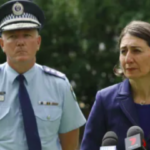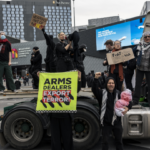How Much Do Drug Dealers Really Make?

The latest weapon in the ‘War On Drugs’ was revealed last week, when the New South Wales police launched a local version of the ‘Dob in a dealer’ campaign in Redfern. The campaign is staying in the suburb for a fortnight, then moving on to Dubbo and other communities across the state.
Although some see the campaign as a nice change from aggressive policing in the area, the fire and brimstone rhetoric is familiar enough:
“If you feel bad about dobbing in drug dealers, let me remind you: they don’t care about you or your family; they don’t care if people become addicted, commit crimes to feed their habit, or overdose and die; they only care about the money they can make” Luke Freudenstein, Redfern police Superintendent, said.
On the surface, this may seem like a good campaign – many see ‘ice’ as a scourge on the community, and any measure which targets ice dealers as desirable – not to mention a vote winner. However, the underlying assumption, that ice dealers make huge amounts of money, is debatable.
Unsurprisingly, there’s not much information available on the income and motives of street-level drug dealers. However, we can get a degree of insight from a surprising source…
What Economics Can Tell Us About Drug Dealers
Sudhir Venkatesh, a mathematician and sociologist from the University of Chicago, is hardly a person you would expect to get stuck in with Chicago’s infamous Black Gangster Disciple Nation, an organisation which has managed extensive drug operations since the 1980s. But that’s exactly what happened.
During a routine survey of a housing project near his University, Venkatesh stumbled across a chapter of the gang. At first, they had no idea what to make of him: they thought he was too black to be a police informant, and too straight-laced to a be a spy from a rival gang. Still, they couldn’t let him go. After a tense standoff, the gang’s leader eventually released him, 24-hours after he’d first bumped into them.
Most young PhD students would have been scared-off by the encounter. Instead, Venkatesh went back the next day and asked if he could stay and observe the gang for his thesis. The gang leader laughed at first, but then agreed, and Venkatesh spent the next several years observing the gang – eventually being given access to their books. What he found was surprising.
“So how did the gang work? An awful lot like most American businesses, though perhaps none more so than McDonalds,” writes Steven Levitt, the author of Freakanomics, who covered Venkateshes findings.
“[The chapter leader’s] hourly wage was $66. His three officers, meanwhile took home… about $7 an hour. And the foot soldiers [street level drug dealers] earned just $3.30 an hour, less than minimum wage.”
Along with the bad pay, Venkatesh was able to use the gang’s books to estimate the workplace risks for each foot soldier. During the four years he was with the gang, he estimated street level dealers would, on average, be arrested 5.9 times, suffer 2.4 non-fatal injuries, and have a 25 per cent chance of being killed. Not great, for $3.30 an hour. He went on to find that:
“To the kids growing up in a housing project on Chicago’s south side, crack dealing was a glamour profession. For many of them, the job of gang boss — highly visible and highly lucrative — was easily the best job they thought they had access to. Had they grown up under different circumstances, they might have thought about becoming economists or writers. “
“But in the neighborhood where J. T.’s gang operated, the path to a decent legitimate job was practically invisible. Fifty-six percent of the neighborhood’s children lived below the poverty line (compared to a national average of 18 percent). Seventy eight percent came from single-parent homes. Fewer than 5 percent of the neighborhood’s adults had a college degree; barely one in three adult men worked at all. The neighborhood’s median income was about $5,000 a year, well less than half the U.S. average.”
In other words, rather than raking it in big off desperation of addicts, dealers themselves were characterised by desperation, unemployment, and a lack of better opportunities.
What Does This Have to Do with Redfern?
It’s no wonder that an area like Redfern, that’s long suffered significant income inequality and unemployment, has become a hotspot for crime. It’s also unsurprising that decades of over-policing have failed to stop this.
Thankfully, headway is being made in campaigns to treat drug use as a health issue, rather than a criminal one. Given what we can gather about the motives of street-level drug dealers, perhaps it’s time to change our thinking, and see drug dealing as an economic issue.
In a recent interview with Sydney Criminal Lawyers®, Sarah Hopkins, the chair of Just Reinvest NSW pointed out that: “Aboriginal juveniles are the most incarcerated group of people in every state across Australia, more than 50 per cent of children in juvenile detention are Aboriginal even though they only constitute around 3 per cent of the population.”
Rather than advocate further policing and tougher sentencing, Just Reinvest has met success channelling resources into community interventions and infrastructure. A justice reinvestment trial the group set up in Bourke, an Aboriginal community in north-west New South Wales, saw crime levels drop to lowest they’d been in five years, by providing money for more youth workers and community activities during the summer holidays.
The Dob in a Dealer campaign has been criticised as a political stunt, not backed by evidence or research, but the true tragedy is that the money can be better spent on addressing the factors that lead to offending, rather than arresting and prosecuting after the fact.






